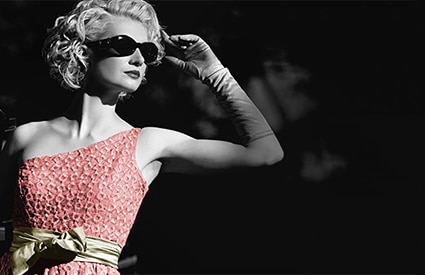Award-wining aesthetic surgical procedures at Cranley Clinic
Through our sister clinic, The Ghanem Clinic, an award winning centre of excellence in aesthetic plastic surgery, we are able to offer a comprehensive range of surgical procedures to help enhance your appearance. At your consultation our experts can explain your treatment options and advise whether surgery is right for you given your current needs and aesthetic aspirations. Whether you are looking to reverse the signs of aging, improve your facial appearance or achieve the body contours you have always wanted, our team of expert aesthetic plastic surgeons are here to help.
To find out more about the treatments we offer, please click the link to visit www.theghanemclinic.com

Facial procedures we offer include;
The skin loses its elasticity and our muscles slacken with age. Fatty tissues redistribute and the skeleton tends to atrophy. For the eyelids this results in an accumulation of loose skin which collects as folds in the upper lids and forms deepening creases in the lower lids. At the same time there is slackening of the muscle beneath the skin allowing the fat, which cushions the eyes in their sockets, to protrude forward to give the appearance of bagginess. In some families there is an inherited tendency for bags to develop during early adulthood before any skin changes.
An eyelid reduction removes the surplus skin and protruding fat to produce a more alert appearance and reduces the morning swelling. Sometimes it is only necessary to reduce the skin, sometimes the skin and the fat and sometimes just the fat. Sometimes the fat pads are used to augment the hollows below the lower eyelids.
Surgery to reshape the nose is a very common plastic surgery procedure and it can both increase or decrease the size of nose. The shape of the tip, the bridge and also the nostrils can be changed as can the angle between the nose and the upper lip. Bent noses can be straightened and broad noses can be narrowed. Sometimes breathing difficulties can be corrected at the same time. The nose is the central feature of the face, many people are self-conscious of shape which they may regard as too big, too small or have some other feature which they dislike. The characteristics of the nose may be inherited from parents and develop during adolescent years. It continues until the age of about 16, when the nose stops growing. It is, therefore, unwise to operate before this age unless there are exceptional circumstances. What can be done? An operation called Rhinoplasty reduces the size of the framework of the nose over which the skin is draped. The frame of the nose which is made up of bone in its upper part and cartilage in its lower part is approached from underneath the skin through surgical incisions which are made inside the nostrils. Think of the frame of the nose as being like the roof of a house. In order to straighten the nose and bring its bridge closer to the face, its ‘ridge’ is cut away. Then to restore a new ‘ridge’ or bridgeline, the two sides of the nose are brought together after breaking the bones of the nose where they join onto the cheek bones. The elasticity of the overlying skin allows it to shrink down on the smaller frame.
Body procedures we offer include;
This is a surgical procedure that effectively removes a considerable amount of abdominal skin and fat, tightens the abdominal wall and elevates the mons pubis (if needed). This is a very popular procedure for women that have lost a considerable amount of weight, or who have had multiple pregnancies and there is a loss of elasticity, a looseness of the abdominal wall. Apart from the unsightly appearance, there may be other symptoms, such as sores and sweat rash, and problems with the fitting of clothes.
Breast Augmentation is the term given to the enhancement of a woman’s breast, usually, but not exclusively, by the use of implants. There is great variety in the size and shape of women’s breasts. In part this is due to the way the breast bud grows in adolescence under the influence of female hormones and there are genetic factors involved. The quality of skin, underlying muscles and chest wall skeleton are also variants that will determine the end shape of the breast. It is almost the norm that the two breasts will have a variable degree of asymmetry.
Droopiness of the breast is a common legacy of motherhood, nursing and the force of gravity taking their toll. The effect of pregnancy and a distension of the breasts with milk causes the fibrous bands which support the breasts in their youthful shape to break down and the skin to stretch. With the subsequent shrinking the unsupported breasts settle into the stretched skin and gravity pulls them down further. Putting on weight and then losing it can have the same effect. So too does the ageing process, which is why women dislike the appearance of their droopy breasts. What can be done? Whilst it is not possible to (surgically) recreate the natural supporting structure of the breast, it is possible to reshape the breast into one which looks more youthful and feels more firm. The operation is called a Mastopexy.

